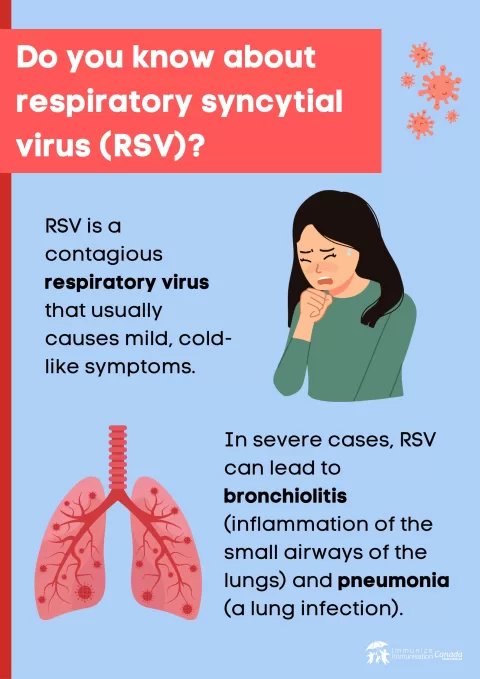Anticoagulant medicines are vital tools in modern medicine, primarily used to prevent and treat blood clots. Often referred to as blood thinners, these medications play a crucial role in managing various cardiovascular conditions, including atrial fibrillation and deep vein thrombosis. With a significant evolution in anticoagulant therapy, recent research continues to highlight their effectiveness and safety profiles. However, as with any medication, anticoagulant risks, particularly the potential for bleeding, necessitate careful management and monitoring. Understanding the types of prescription anticoagulants available is essential for patients and healthcare providers alike to optimize treatment outcomes.
When discussing anticoagulant medicines, one often encounters terms like blood thinners and anticoagulation therapy, which all point to the same critical function of these medications. These pharmacological agents are designed to inhibit the formation of blood clots, thus reducing the risk of serious cardiovascular events such as strokes and heart attacks. The landscape of anticoagulation has transformed over the years, introducing a range of options that include both traditional and novel agents. As healthcare professionals navigate the complexities of anticoagulant risks and benefits, it is imperative to stay informed about the latest developments in this essential field of medicine. Ultimately, the goal remains to provide safe and effective treatment for patients at risk of thromboembolic events.
The Importance of Anticoagulant Medicines in Cardiovascular Health
Anticoagulant medicines are vital in managing various cardiovascular diseases, particularly those associated with abnormal blood clotting. Their role is crucial for patients suffering from conditions like atrial fibrillation, deep vein thrombosis (DVT), and pulmonary embolism (PE). By preventing the formation of blood clots, these medications significantly reduce the risk of life-threatening complications such as strokes and heart attacks, which are common in individuals with cardiovascular issues. The ability of anticoagulants to inhibit clotting factors in the blood stream allows patients to lead healthier lives, free from the constant threat of clot-related emergencies.
Moreover, the therapeutic use of anticoagulants has evolved with advancements in medical research, leading to the development of newer, more effective blood thinners. For instance, direct oral anticoagulants (DOACs) offer a more predictable anticoagulation effect without the need for regular blood monitoring, which was a significant drawback of traditional medications like warfarin. This evolution has made anticoagulant therapy more accessible and manageable for patients, resulting in improved adherence to treatment regimens and better overall outcomes in cardiovascular health.
Recent Findings in Anticoagulant Therapy
Recent studies have shed light on the safety profiles of various anticoagulants, revealing that the bleeding risks associated with these medications may not be as severe as previously thought. For instance, a groundbreaking study indicated that the bleeding risks of anticoagulants are comparable to those of aspirin. This finding is pivotal for healthcare providers, as it encourages them to consider prescribing anticoagulant therapy to patients who may benefit from it without the overhanging fear of adverse bleeding events. Such insights help in making informed decisions about anticoagulation therapy, enhancing patient safety and treatment efficacy.
Additionally, research has highlighted the risks of abruptly discontinuing anticoagulant therapy, particularly among older adults. These patients are at a greater risk of experiencing severe cardiovascular events, such as strokes or heart attacks, when their anticoagulant treatment is suddenly stopped. As a result, healthcare professionals must exercise caution and consider the long-term management of anticoagulant therapy, weighing the benefits of treatment against the risks associated with cessation. This approach emphasizes the importance of ongoing patient education and careful monitoring to optimize outcomes.
Common Types of Anticoagulants and Their Uses
Anticoagulants can be categorized into several classes, each with specific mechanisms of action and clinical applications. Traditional anticoagulants, such as warfarin, require regular blood monitoring to ensure effective dosing and minimize the risk of bleeding complications. On the other hand, newer medications like direct oral anticoagulants (DOACs) have gained popularity due to their predictable effects and reduced need for monitoring. These advancements allow healthcare providers greater flexibility in prescribing the most appropriate anticoagulant therapy based on individual patient needs.
Moreover, anticoagulants are utilized in various clinical settings, from outpatient management of chronic conditions like atrial fibrillation to acute hospital settings for patients experiencing deep vein thrombosis or pulmonary embolism. The choice of anticoagulant depends on multiple factors, including patient-specific risk factors, the type of condition being treated, and the clinician’s familiarity with the medication. This tailored approach to anticoagulant therapy ensures that patients receive the most effective treatment for their individual circumstances.
Understanding the Risks and Benefits of Anticoagulants
While anticoagulants provide significant therapeutic benefits in preventing dangerous blood clots, they also come with inherent risks, primarily related to bleeding complications. The management of anticoagulant therapy requires careful monitoring and dosage adjustments to strike a balance between minimizing bleeding risks and maximizing therapeutic benefits. Clinicians must be vigilant in assessing each patient’s risk profile and adjusting treatment plans accordingly to ensure safety while still effectively preventing thromboembolic events.
Additionally, patient education plays a crucial role in the successful management of anticoagulant therapy. Patients must be informed about the potential risks associated with their medications, such as the signs of excessive bleeding, and the importance of adhering to prescribed dosages. Furthermore, understanding the role of lifestyle factors—such as diet and interactions with other medications—can empower patients to take an active role in their treatment, enhancing overall safety and efficacy in anticoagulant therapy.
The Future of Anticoagulant Medicines: Innovations and Trends
The field of anticoagulation is rapidly evolving, with ongoing research aimed at improving the safety and efficacy of blood thinners. Recent innovations include the development of novel anticoagulants that target specific clotting factors, potentially offering more effective and safer treatment options for patients. These advancements are promising, as they may reduce the likelihood of bleeding complications associated with traditional anticoagulants, thus broadening the patient population that can safely use these medications.
Furthermore, future trends in anticoagulant therapy may include personalized medicine approaches, where genetic profiling helps determine the most suitable anticoagulant for individual patients. This tailored approach could lead to more effective treatment strategies, minimizing adverse effects while enhancing therapeutic outcomes. As research continues to unveil new insights into anticoagulant mechanisms and patient responses, the future landscape of anticoagulant therapy looks promising, with the potential for even greater advancements in patient care.
Frequently Asked Questions
What are anticoagulant medicines and how do they work?
Anticoagulant medicines, commonly known as blood thinners, are medications that prevent blood clots by inhibiting the coagulation process. They are used to treat and prevent conditions such as deep vein thrombosis (DVT), pulmonary embolism (PE), and stroke in patients with atrial fibrillation. By interfering with the body’s ability to form clots, anticoagulants help reduce the risk of serious cardiovascular events.
What are the common types of anticoagulants available?
Common types of anticoagulants include traditional medicines like Warfarin (Coumadin), which requires regular blood monitoring, and newer Direct Oral Anticoagulants (DOACs) such as Apixaban (Eliquis), Rivaroxaban (Xarelto), and Dabigatran (Pradaxa). These newer blood thinners are preferred for many patients due to their predictable effects and less frequent monitoring requirements.
What are the risks associated with anticoagulant therapy?
While anticoagulant therapy is essential for preventing blood clots, it carries risks, primarily of bleeding complications. Patients on anticoagulants may experience severe bleeding events, especially if the therapy is not monitored properly. Additionally, abrupt discontinuation of anticoagulant therapy can increase the risk of stroke, particularly in older adults with conditions like atrial fibrillation.
How long should anticoagulants be taken for treatment?
The duration of anticoagulant therapy varies based on the underlying condition being treated. For example, patients with a recent DVT or PE may require anticoagulants for several months, while those with atrial fibrillation may need long-term therapy to prevent strokes. Healthcare providers assess individual patient risks and benefits to determine the appropriate length of treatment.
Can over-the-counter medications be used as anticoagulants?
Most effective anticoagulant medications require a prescription due to their potency and potential side effects. However, low-dose aspirin is available over-the-counter and offers mild anticoagulant effects. It’s important for individuals to consult healthcare professionals before starting any form of anticoagulation therapy, even with over-the-counter options.
| Key Points | Details |
|---|---|
| Overview of Anticoagulant Medicines | Anticoagulants, or blood thinners, prevent and treat blood clots, essential for managing cardiovascular conditions. |
| Recent Developments | Research shows bleeding risks with anticoagulants are comparable to aspirin, emphasizing their safe use. |
| Risks of Discontinuation | Abruptly stopping anticoagulants in older patients increases stroke or heart attack risks. |
| Long-term Use | Initial bleeding risks decrease over time, particularly in women and elderly patients. |
| Common Anticoagulants | Includes Warfarin, DOACs like Apixaban, and Heparin, each with unique applications. |
| Conditions Treated | Used for atrial fibrillation, DVT, PE, myocardial infarction, and stroke prevention. |
| Risks and Benefits | Anticoagulants prevent clots but carry bleeding risks, requiring careful management. |
| Over-the-Counter Options | Low-dose aspirin is available OTC, but consultation with healthcare providers is essential. |
Summary
Anticoagulant medicines play a vital role in the prevention and management of blood clot-related conditions. With ongoing research and advancements, the safety and effectiveness of these medications continue to improve, allowing healthcare providers to manage patient care better. Clinicians must remain aware of the complexities involved, including the risks of bleeding and the implications of discontinuation, particularly in older patients. As anticoagulants are essential in treating conditions like atrial fibrillation, DVT, and PE, understanding their benefits and risks is crucial for optimizing patient outcomes.
The content provided on this blog (e.g., symptom descriptions, health tips, or general advice) is for informational purposes only and is not a substitute for professional medical advice, diagnosis, or treatment. Always seek the guidance of your physician or other qualified healthcare provider with any questions you may have regarding a medical condition. Never disregard professional medical advice or delay seeking it because of something you have read on this website. If you believe you may have a medical emergency, call your doctor or emergency services immediately. Reliance on any information provided by this blog is solely at your own risk.








